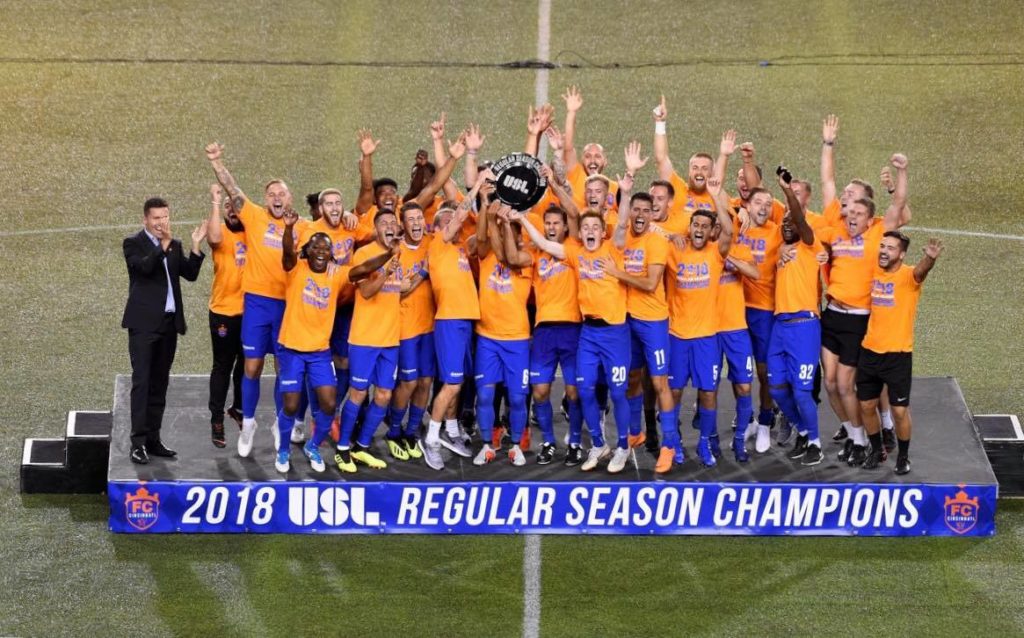With FC Cincinnati moving on to MLS, the USL will lose its top-drawing team in 2019. That will put a dent in next year’s attendance figures, but the league’s new normal in terms of attendance could still be solid.
What FC Cincinnati accomplished in Division II USL (to be rebranded USL Championship) may not be repeated, at least within the near future. The club set numerous attendance records in its three seasons of USL competition, and finished the 2018 season with a per-game average of 25,717. FC Cincinnati had a few advantages on its side, including a passionate fan base that helped propel it to MLS and the ability to play matches in Nippert Stadium—the home of University of Cincinnati football.
Cincinnati is departing the league, while Nashville SC—which achieved an average of 9,561 this season—will leave the USL once Nashville’s MLS expansion club begins play in 2020. Even with those moves, however, USL is left with a few solid clubs going forward—including a few MLS expansion contenders.
Sacramento Republic FC is a perennial attendance success and could rise to the top of the charts next year with the departure of Cincinnati. Phoenix Rising FC, meanwhile, is part of an MLS expansion field that includes Sacramento, and its figure of 6,380 fans per game for 2018 came on the heels of a strong 2017. Indy Eleven has shown signs of MLS ambitions, but should be a positive factor in USL attendance for at least the next few seasons. There is also Louisville City FC, a club that has posted strong numbers for several years and could grow in that area when it opens a new 11,300-seat soccer-specific stadium in 2020.
There are also a few teams that finished within the top 10 of 2018 attendance that should be able to sustain their numbers going forward, including Las Vegas (7,266 per game), San Antonio (6,939), Tampa Bay (5,553), and Reno (5,066). In addition, USL will welcome seven expansion teams in 2019—including Austin Bold FC, Loudoun United FC, Hartford Athletic, New Mexico United (to play at Albuquerque’s Isotopes Park in 2019), Birmingham Legion FC, El Paso Locomotive FC, and Memphis 901 FC. Memphis, El Paso, and New Mexico will all play in existing Minor League Baseball facilities, giving them an edge in terms of capacity. That is not to say that any or all of them are guaranteed instant success, but the sizes of their venue could help them stand out within the league.
It should also be noted that some of the USL’s lower drawing clubs will move down to USL League One, a Division III circuit. That includes Toronto FC—which finished with a league-low 810 fans per game in 2018—and Penn FC, a club that is planning to begin League One play in 2020 after averaging 2,147 per game last season. Richmond Kickers FC fared better than both of those teams by finishing 17th out of 33 clubs last season, but the team’s average of 3,976 was still below the league average of 4,916.
Going forward, USL’s attendance figures will take a hit as Cincinnati departs. However, the expansion clubs—combined with the departure of some lower-drawing teams—could help the league post solid numbers. Where exactly USL ends up in 2019 and beyond remains to be seen, but the clubs that remain in the aftermath of Cincinnati (and later Nashville) leaving the league should help it post solid figures as part of a new normal with attendance.
Image courtesy FC Cincinnati.

